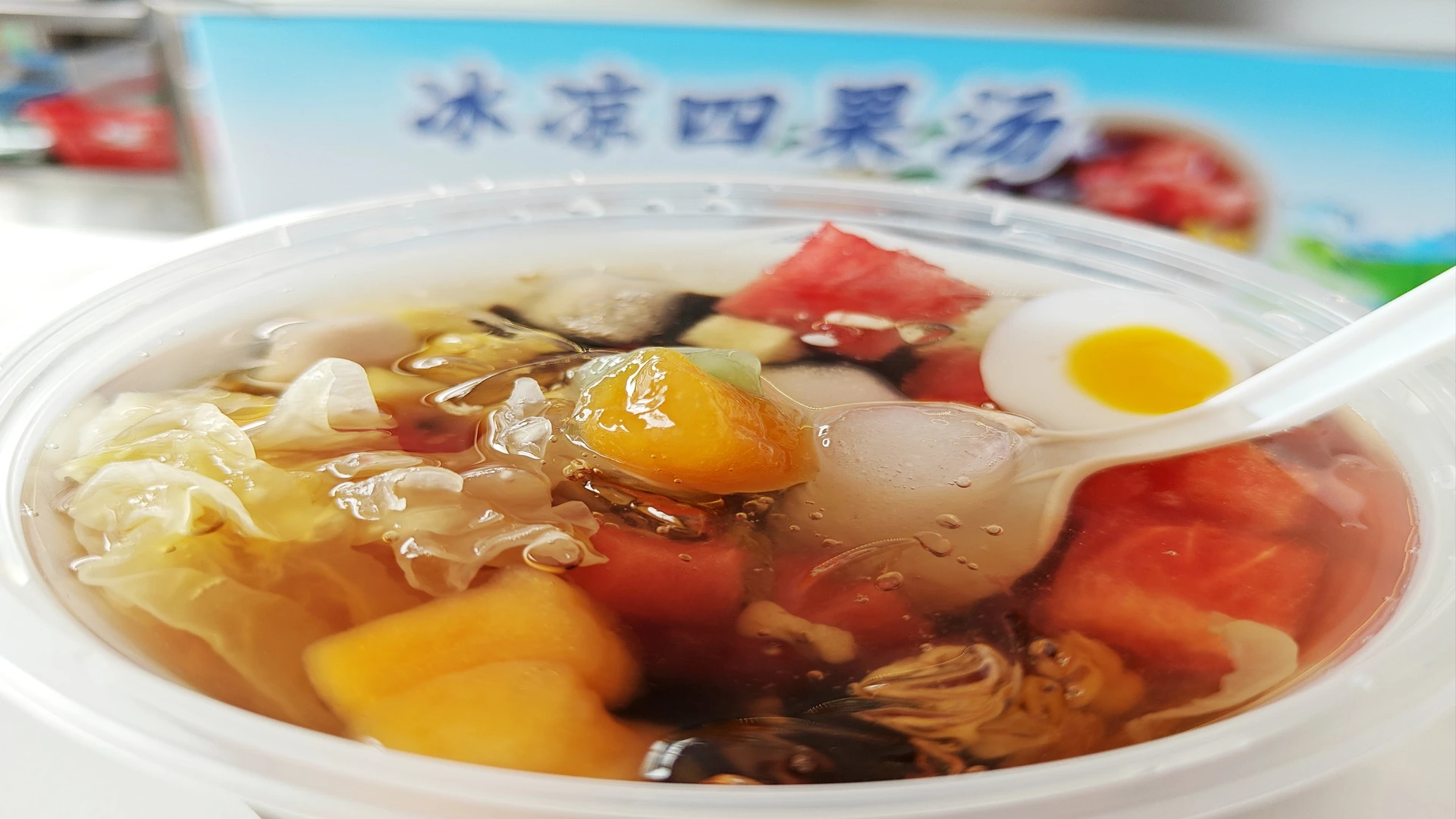The Delights of Si Guo Tang: A Taste of Zhangzhou’s Refreshing Tradition
As a culinary professional with a passion for regional specialties, I am thrilled to introduce you to one of the most iconic summertime treats from Zhangzhou, a city in the Fujian province of China—Si Guo Tang. This delightful dessert is not only a testament to the region’s rich culinary heritage but also a refreshing escape from the sweltering heat of summer.
Origins and Cultural Background:
Si Guo Tang, or “Four Fruit Soup,” has its roots deeply embedded in the history and culture of Zhangzhou. It is said that the dish originated as a simple, home-cooked remedy to combat the oppressive heat of the southern Chinese summers. Over time, it evolved into a beloved street food and a symbol of the city’s culinary identity. The name “Si Guo Tang” directly translates to “four fruits,” reflecting the initial simplicity of the dish, which has since expanded to include a variety of ingredients.
Ingredients and Preparation:
At the heart of Si Guo Tang is a base of Shihuagao, a jelly made from the seaweed known as “seaweed flower” or “stone flower.” This jelly is not only the foundation of the dish but also a key to its cooling effect, as it is known for its ability to soothe the throat and provide relief from the heat.
The toppings are where the dish truly shines, with a variety of fruits and ingredients that can be customized to personal taste. Traditionally, the dish includes:
1. Watermelon: Sliced into bite-sized pieces, watermelon adds a burst of natural sweetness and juiciness to the dish.
2. Taro Balls (Yu Yuan): These chewy, glutinous balls made from taro are a staple in many Asian desserts and provide a delightful texture contrast.
3. Mung Bean Jelly: Also known as “green bean jelly,” it adds a subtle, earthy flavor and a smooth, wobbly texture.
4. Coconut Milk: This creamy topping adds richness and a tropical twist to the dessert.
However, the list of toppings is not limited to these four. Depending on the season and availability, other fruits like lychees, longans, or even mangoes can be added, making each serving a unique experience.
Texture and Flavor:
Si Guo Tang is a symphony of textures and flavors. The Shihuagao base is firm yet yielding, providing a refreshing, slightly sweet taste that complements the other ingredients. The watermelon is crisp and sweet, offering a refreshing contrast to the chewy taro balls and the smooth mung bean jelly. The coconut milk drizzled on top adds a luscious creaminess that ties all the elements together.
Visual Description:
Visually, Si Guo Tang is a feast for the eyes. The translucent Shihuagao base is a beautiful canvas for the colorful toppings. The vibrant red of the watermelon, the deep purple of the taro balls, and the jade green of the mung bean jelly create a stunning mosaic. The dish is often served in a clear glass or bowl, allowing the eye to appreciate the layers of color and texture.
Signature Dishes and Culinary Features:
While Si Guo Tang is the star of the show, there are other regional dishes that showcase the flavors and ingredients of Zhangzhou. For instance, one can enjoy a meal of Zhangzhou卤面 (Zhangzhou braised noodles) or 蚵仔煎 (oyster omelette), both of which highlight the region’s seafood and noodle dishes.
The culinary features of Zhangzhou’s cuisine, including Si Guo Tang, are characterized by their balance of flavors, the use of fresh local ingredients, and the incorporation of cooling elements to combat the heat. These dishes are not only delicious but also emblematic of the region’s history and climate.
In conclusion, Si Guo Tang is more than just a dessert; it is a cultural experience that encapsulates the essence of Zhangzhou’s culinary tradition. Its refreshing nature, vibrant colors, and satisfying textures make it a must-try for anyone visiting or seeking a taste of authentic Chinese regional cuisine.
